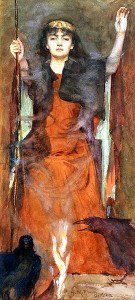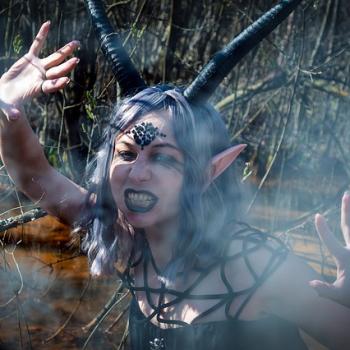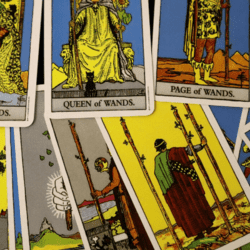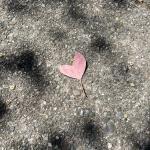 According to the Scottish folklorist Donald MacKenzie, Bride (the Scottish Brighid) is imprisoned in Ben Nevis by the hag goddess known as the Cailleach during the winter months before being freed by Angus Og, the god of love. An alternative version of the same seasonal legend states that the Cailleach can transform herself from a terrifying hag in the winter half of the year to a beautiful young maiden in the summer half- implying that Bride and the Cailleach are the same entity.
According to the Scottish folklorist Donald MacKenzie, Bride (the Scottish Brighid) is imprisoned in Ben Nevis by the hag goddess known as the Cailleach during the winter months before being freed by Angus Og, the god of love. An alternative version of the same seasonal legend states that the Cailleach can transform herself from a terrifying hag in the winter half of the year to a beautiful young maiden in the summer half- implying that Bride and the Cailleach are the same entity.
The sources for both these stories are unclear, and may have been cobbled together by folklorists such as MacKenzie out of much vaguer references in the oral tradition to the Cailleach imprisoning or transforming into an unnamed maiden representing the spring. However, since Bride’s festival on February 1 is the beginning of spring in Gaelic lore, and the Cailleach is represented as struggling to hold back the spring before finally giving up on March 25, the connection between the unnamed maiden and Bride is at least a logical one. It is also possible that the folklorists had access to a now-lost source specifically naming the maiden as Bride. This concept is not found anywhere in other sources such as the Carmina Gadelica. However, there is a rather convoluted point of connection between the two otherwise very different deities.
In Lowland Scotland, the mix of Celtic, Norse and Saxon cultural influences led to the Cailleach being referred to as the Gyre Carling. “Gyre” comes from a Scandinavian word referring to a primal giantess much like the Cailleach, while “Carling” or “Carlin” is the Lowland Scots equivalent to the Gaelic word “Cailleach.” In Scottish folklore, it was always understood that the Lowland Gyre Carling and the Highland Cailleach were the same being.
However, the Lowland Scots also believed that the Gyre Carling could appear in the form of a beautiful witch queen or queen of the Unseelie Court of sinister fairies. This “Queen of Elphame” was supposed to be worshiped by the Scottish witches, and sixteenth century witchcraft trial documents make many references to her, including the statement that she could be young or old at will. According to Scottish folklore, she rides out every Hallowe’en at the head of her spirit army or Wild Hunt. Both the attractive “witch queen” form of the Gyre Carling and the chief witch of any coven of Scottish witches were supposed to be referred to by the same name: Nicnevin.
Some scholars will tell you that this is a Gaelic last name referring to a saint, but that is to be skeptical merely for the same of being skeptical. One of the names of the Irish Sovereignty goddess known as the Morrigan was Neamhain or “Frenzy,” and in Gaelic NicNeamhain means “Daughter of Neamhain” and therefore “Daughter of the Morrigan.” It is pronounced “Nicnevin.”
In other words, not only does the Cailleach (possibly) change into Bride during the summer months, but the Cailleach’s younger alter-ego in the winter months is also referred to as the “Daughter of Neamhain” or daughter of the Morrigan. Despite being portrayed as a sinister entity, this Daughter of Neamhain also performs some of the functions of Bride. Bride is particularly associated with midwives in Gaelic lore, but in volume eight of Calderwood’s “History of the Kirk of Scotland” there is a reference to a midwife from 1582 describing her as “Nicknevin’s daughter.”
If Bride is the patron saint of midwives but a midwife is a “daughter of Nicnevin,” does that mean that Bride and Nicnevin are the same entity in some sense? Because Brighid is the daughter of the Dagda in Irish lore and the Morrigan is sometimes referred to as the Dagda’s wife, many modern pagans consider Brighid to be the daughter of the Morrigan. Personally, I have always felt that Brighid was much more similar to the Dagda’s other mate, the goddess Boann. However, consider the following.
If the Morrigan is Neamhain and Brighid is the daughter of the Morrigan, then Brighid is literally the “daughter of Neamhain” or Nicnevin. Of course, that doesn’t mean she’s the same “daughter of Neamhain” as the Scottish fairy queen — they could just as logically be sisters. However, Bride’s role as a goddess of poetry is paralleled by the relationship between the Queen of Elphame and the Lowland Scottish bard and prophet known as True Thomas or Thomas the Rhymer. It’s almost as if Nicnevin is Bride’s sinister sister- although they are never described as sisters nor even mentioned together in any Scottish lore. In fact, charms such as the Genealogy of Bride invoke Bride for protection against the invisible arrows of the Wild Hunt — who rode with Nicnevin at their head.
Are Bride and Nicnevin estranged sisters? Or, if Mackenzie was right and the Cailleach and Bride are the same entity on some level, then is Nicnevin also the same entity as Bride on some level?
This appears to be an example of the fluidity and ambiguity typical of myth — you can try to work out a logical system with clearly-defined boundaries, but you will never succeed. The lore is just too fluid for that. However, if the Cailleach is the Gyre Carling and the Gyre Carling can become Nicnevin, and Nicnevin is the daughter of Neamhain or the Morrigan… then the possibility of some connection between the kind, gentle and loving Bride and the wild and wicked hag goddesses and fairy queens of Scottish folklore cannot be ruled out.
Loop of Brighid is published on alternate Thursdays. Follow it via RSS or e-mail!

















